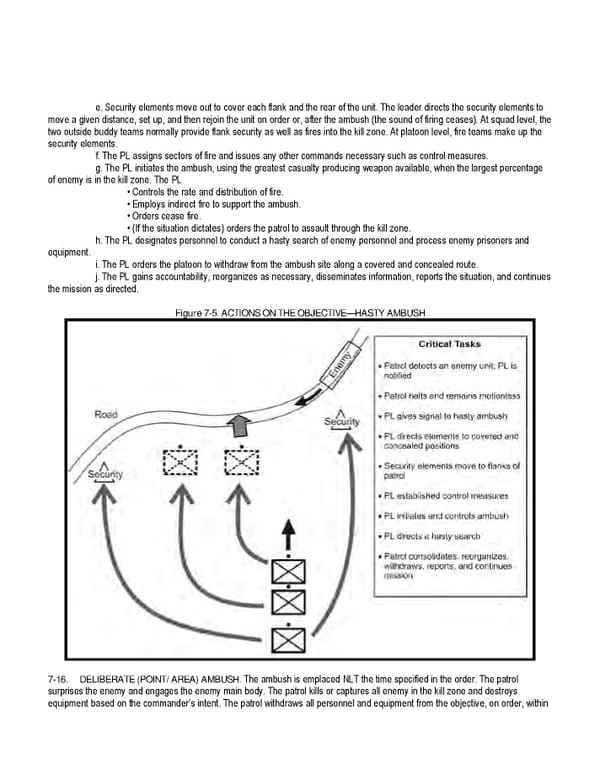e. Security elements move out to cover each flank and the rear of the unit. The leader directs the security elements to move a given distance, set up, and then rejoin the unit on order or, after the ambush (the sound of firing ceases). At squad level, the two outside buddy teams normally provide flank security as well as fires into the kill zone. At platoon level, fire teams make up the security elements. f. The PL assigns sectors of fire and issues any other commands necessary such as control measures. g. The PL initiates the ambush, using the greatest casualty producing weapon available, when the largest percentage of enemy is in the kill zone. The PL • Controls the rate and distribution of fire. • Employs indirect fire to support the ambush. • Orders cease fire. • (If the situation dictates) orders the patrol to assault through the kill zone. h. The PL designates personnel to conduct a hasty search of enemy personnel and process enemy prisoners and equipment. i. The PL orders the platoon to withdraw from the ambush site along a covered and concealed route. j. The PL gains accountability, reorganizes as necessary, disseminates information, reports the situation, and continues the mission as directed. Figure 7-5. ACTIONS ON THE OBJECTIVE—HASTY AMBUSH 7-16. DELIBERATE (POINT/ AREA) AMBUSH. The ambush is emplaced NLT the time specified in the order. The patrol surprises the enemy and engages the enemy main body. The patrol kills or captures all enemy in the kill zone and destroys equipment based on the commander’s intent. The patrol withdraws all personnel and equipment from the objective, on order, within
 Ranger Handbook Page 123 Page 125
Ranger Handbook Page 123 Page 125